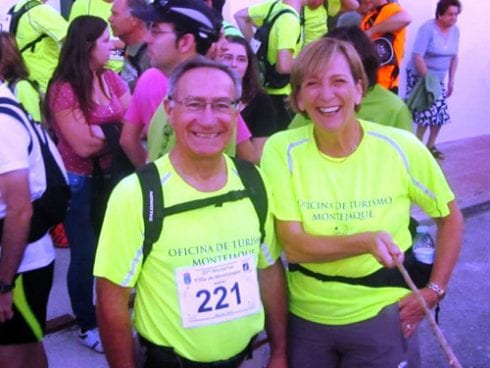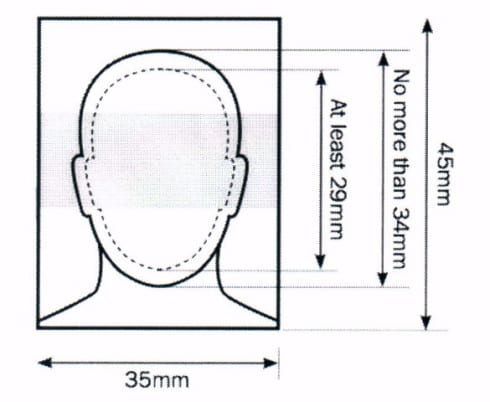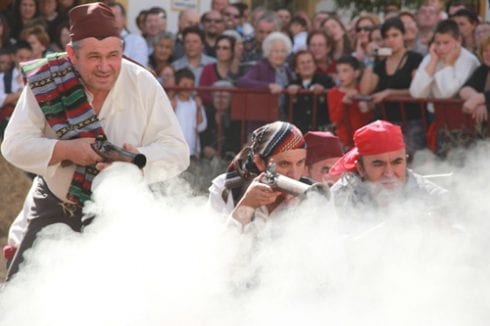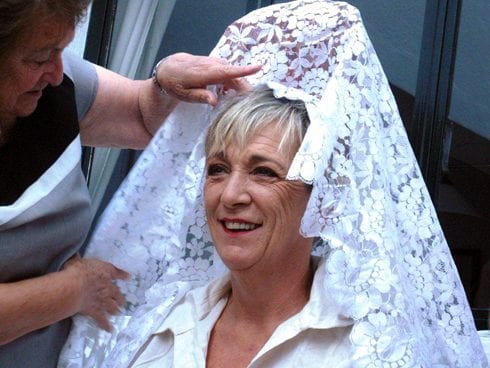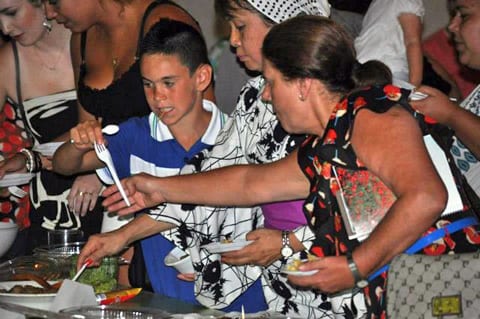The recipe book has gone to the printer for a proof.
Should I ask the recipe submitter of ‘Guiso de Patas’ if my English translation of its title (i.e. ‘Pork Stew’) should really be ‘Dunsinane Casserole’?
The ingredients certainly conjure up images of ‘eye of newt, and toe of frog.’
THE MONTEJAQUE COOKBOOK AND VILLAGE GUIDE
For the past three months, I have been co-ordinating the design and production of a cookbook and guide for the village of Montejaque (where we have been permanently retired for just over a year). Perhaps the explanation of why I took on this project is best explained by the introductory pages of the book:
“This cookbook contains some of the most treasured and popular recipes of our village, handed down over generations but never before recorded or produced in a single publication. As much as possible, the recipes have been translated using the words of the contributors themselves.
Among my favourites is the one for Magdalenas, which doesn’t use cups or grams to measure the ingredients: the weight of the sugar, the butter and the flour in the recipe is equivalent to the weight of the egg. There are also instructions on how to collect and prepare Caracoles (snails): “Leave them to fast for three days, to get rid of the bitterness of the herbs that they tend to eat; after three days, toss them in 500g of flour and keep them in a net bag for a few more days.”
Other recipes include those contributed by the foreign residents of the village, as well as traditional Spanish dishes (like paella) and the tapas that are served in the local bars and restaurants.
For visitors to Montejaque, we have included the opening hours of the supermarkets and shops, with the specialties that they offer. You’ll also find information on the many facilities available (e.g. gymnasium, swimming pool, internet), accommodation, transportation and tourist attractions and services.
We hope you will support our village by purchasing a copy of the Montejaque Cookbook and Village Guide. Enjoy using it while you are here, and then take it home – not only as a memento of your stay but also to cook and enjoy the fascinating traditional recipes.”
I collaborated on the book with María Victoria Naranjo Hiraldo, whose responsibility was to bully the local ladies into providing all the recipes that have been handed down over the generations. I used ‘Google Translate’ to interpret the ingredients and the method for making each recipe … I wanted the book to be written in both Spanish and English, for the benefit of our tourists. This is how I nearly named ‘Guiso de Patas’ as ‘Dunsinane Stew’, because the ingredients translated as: “six trotters; 500g of meat between ear and nose of the pig tail; a tail, half a heart, tongue and throat; bark and old spine.” Victoria also helped with the Google translation of the foreign residents’ recipes, which were perfectly understandable in English but were also hysterical in Spanish.
Our next hurdle was to sell the concept to the local shops, supermarkets, bars and restaurants: we needed their advertisements to pay for the production of the book. All but four of the 16 bars in the village were willing or able to participate … and we have included some fabulous and unusual tapas recipes: a couple of the tapas bars have professional chefs who also work in high-class restaurants.
Bring on Chris Mees, who runs El Cortijo Fuente Marchal (which offers accommodation in Montejaque for couples, families or groups of up to 22 people). Chris is a fantastic photographer, and he was very willing to design all of the advertising for the supermarkets, bars and restaurants in the village, as well as to provide the majority of the landscape photographs in the cookbook.
I have learned so much from producing this cookbook and village guide: I have discovered that some restaurants and supermarkets have ‘food to go’ – which is great if you’ve been slumming in a swimsuit all day, and you can send your partner into the village to pick up a pan of paella or a portion of barbecued chicken and chips.
The best benefit to me of producing this book: my Spanish has improved tremendously, and I can now tell you the translation of virtually every tapas offering in every bar in the village. The translation of tapas items is included as another section in the cookbook … which is for those people who order ‘callos’ – the Google translation is ‘corns’ – and end up with a bowl of tripe!
The Cookbook and Village Guide will be available for sale in Montejaque from mid-July, at a recommended price of 7€ a copy. Proceeds from the sale will go towards social projects in the village … or towards the next idea that I have to promote this beautiful place in which we have chosen to retire.
Click here to read more News from The Olive Press.

